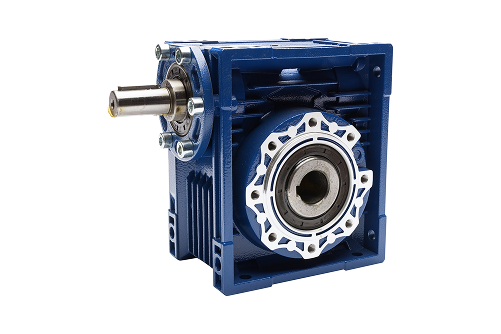In industrial machinery and power transmission systems, gearboxes (also known as reducers) are essential components used to adjust the speed, torque, and direction of mechanical power. They are designed to transfer power between shafts while changing the speed and torque to suit the needs of different applications. Gearboxes are critical in many industrial settings, from manufacturing plants to heavy-duty machinery, and they help ensure efficient and reliable operations.
Understanding Gearboxes: The Basics
An industrial gearbox, often referred to as a reducer, is a mechanical device that reduces the input speed of a motor or engine and converts it into a lower speed with higher torque. It does this by using a series of gears—sets of toothed wheels that mesh together to transmit rotational motion from one shaft to another.
Gearboxes are typically made from durable materials like steel or cast iron and can be found in a wide range of sizes to fit different power requirements. By using gears of various sizes and configurations, gearboxes can adjust the speed of rotation and torque that is delivered to the driven machinery.
How Does a Gearbox Work?
A gearbox works by taking the rotational input from a motor or engine and reducing its speed while increasing the output torque. The reduction in speed and increase in torque is achieved by using different sizes of gears in a gear train. The gears mesh together, transferring the motion while adjusting the speed ratio.
For example, a motor might produce a high-speed rotation, but the application requires a slower speed with higher torque to move a heavy load. The gearbox steps down the speed of the motor's rotation and increases the torque delivered to the driven equipment, such as a conveyor, pump, or industrial fan.
There are different types of gear configurations used within gearboxes, including:
• Spur Gears: Simple gears with straight teeth, used for efficient and direct power transmission.
• Helical Gears: Gears with angled teeth that provide smoother operation and can handle more torque than spur gears.
• Bevel Gears: Gears that operate at a 90-degree angle to change the direction of motion.
• Planetary Gears: A gear system where smaller gears (planets) revolve around a central gear (the sun gear), providing a compact and efficient solution for high-torque applications.
Why Are Gearboxes Important?
Gearboxes (or reducers) are crucial in many industrial applications for the following reasons:
• Speed Reduction and Torque Increase: Gearboxes allow machines to operate at the correct speed and torque, matching the needs of the machinery without overloading or damaging the motor.
• Efficiency: By adjusting the speed and torque, gearboxes help machines work more efficiently, reducing energy consumption and wear.
• Precision Control: Gearboxes enable precise control over the movement of machinery, ensuring smooth and reliable operation in processes such as material handling, production lines, and pumps.
• Adaptability: Gearboxes allow motors to be adapted to different machines with varying power and speed requirements, providing flexibility in design and application.
Types of Industrial Gearboxes
There are several types of gearboxes used in industrial applications, each designed for specific needs and environments:
1. Helical Gearboxes: These gearboxes use helical gears, which have teeth angled in a way that allows for smoother and quieter operation. They are ideal for applications requiring medium to high power transmission, such as conveyors, mixers, and compressors.
2. Bevel Gearboxes: Bevel gearboxes are used when a change in the direction of rotation is needed, typically at a 90-degree angle. They are used in applications like drive shafts, vehicles, and heavy-duty equipment.
3. Planetary Gearboxes: Planetary gearboxes are compact and efficient, with a system of gears arranged in a planetary configuration. They provide high torque output in a small footprint and are commonly used in robotics, automotive, and industrial applications requiring precise control and high torque.
4. Worm Gearboxes: Worm gearboxes are used when significant speed reduction and high torque are required in a compact design. They are often found in applications where the input and output shafts need to be at right angles to each other, such as in lifts, winches, and conveyors.
5. Cycloidal Gearboxes: These gearboxes use cycloidal gears and are known for their high torque output and shock load resistance. They are often used in industries like construction, mining, and heavy machinery.
6. Planetary and Spur Gear Combination Gearboxes: A combination of planetary and spur gears can be used for applications requiring both high torque and high-speed reduction in a relatively small, efficient design. These gearboxes are commonly found in robotics and automation systems.
Applications of Industrial Gearboxes
Industrial gearboxes are used in a wide variety of industries and applications, including:
• Manufacturing: Gearboxes are found in industrial machines such as lathes, drills, and presses, where they reduce speed and increase torque for more controlled and efficient operation.
• Timber Mills: Gearboxes are used in sawmills and other timber processing equipment to ensure the proper speed and torque for cutting, moving, and processing wood.
• Food Processing: In food manufacturing plants, gearboxes are used to control the speed of conveyors, mixers, and other equipment that require consistent and reliable motion.
• Mining and Construction: Heavy-duty gearboxes are used in crushers, excavators, and other large machinery to handle high torque and reduce speeds for heavy material handling.
• Pumps and Compressors: Gearboxes are used in pump systems and compressors to provide the correct speed and torque, ensuring reliable fluid flow and air compression.
Maintaining Gearboxes
To ensure the longevity and efficiency of a gearbox, regular maintenance is necessary:
• Lubrication: Gearboxes require proper lubrication to reduce friction, prevent overheating, and extend the life of the gears.
• Inspection: Regular inspections can help detect signs of wear, overheating, or misalignment, which can prevent costly repairs or system failures.
• Cleanliness: Keeping the gearbox clean from dirt, debris, and contaminants helps prevent damage and maintains optimal performance.
• Monitoring Vibration and Noise: Unusual vibrations or noise can indicate issues with the gearbox, such as gear wear or misalignment.
At RR Fisher, we provide high-quality industrial gearboxes designed to meet the needs of various industries. Whether you need a helical, bevel, planetary, or other types of gearboxes, we can help you find the right solution to optimize your machinery and ensure smooth power transmission.
What is an Industrial Gearbox or Reducer?

